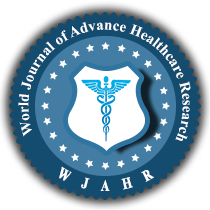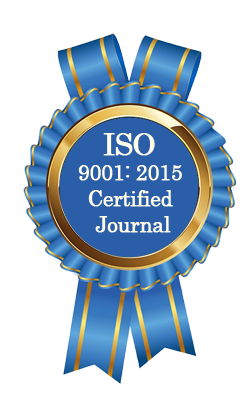| All | Since 2020 | |
| Citation | 105 | 60 |
| h-index | 4 | 4 |
| i10-index | 3 | 2 |
WJAHR Citation 
Login
News & Updation
Best Article Awards
World Journal of Advance Healthcare Research (WJAHR) is giving Best Article Award in every Issue for Best Article and Issue Certificate of Appreciation to the Authors to promote research activity of scholar.
Best Article of current issue
Download Article : Click here
Indexing
Abstract
RELATIONSHIP BETWEEN THE RATIO OF THE LENGTH OF THE 2ND DIGIT TO THE 4TH DIGIT (2D:4D RATIO) AND PROSTATE CANCER
Dr. John Edoka Raphael* and Dr. Bolaji Otike Odibe
ABSTRACT
Background: The ratio of the length of the second digit or index finger (2D) to the fourth digit or ring finger(4D) is a marker for prenatal androgen exposure. A low 2D:4D ratio suggests a high intrauterine androgen exposure. There is evidence that intrauterine androgen exposure plays a role in the aetiology of malignancies, including prostate cancer. Prostate cancer is known to be androgen-dependent. Objective: This study aims to determine the relationship between prostate cancer and the ratio of the index length to the ring finger. (2D:4D ratio) Methodology: This is a comparative descriptive cross-sectional study between patients with prostate cancer (PCa) and benign prostatic enlargement (BPE) that serve as the control. Investigation results such as prostate-specific antigen (PSA) levels, ultrasound scan, histology results of the prostate biopsy were obtained for both the PCa and BPE groups. All the patients in the PCa group had histologically diagnosed prostate cancer. The patient in the BPE (Control) had clinically or histologically diagnosed BPE. The length of their second (2D) and fourth fingers (4D) were measured. Results: Forty patients participated in the study: twenty PCa and twenty with BPE (Control). Their age range was between 39-93years, with a mean age of the PCa group being 71.50±7.59years, while the BPE group had a mean of 70.55±13.82years. The mean PSA of the PCa group was significantly higher (116.57±164.5ng/ml) than the BPE group (10.64±18.65ng/ml; p=0.0070). Patients with PCa had a higher mean 2D:4D ratio than the BPE group. There was a statistically significant weak positive relationship between prostate cancer and 2d:4d ratio, indicating that men with a high 2D:4D ratio had a significantly moderately greater risk of developing prostate cancer. (p=0.035, r=0.236). Conclusion: Our study indicated that prostate cancer patients had higher 2D:4D ratios and higher serum PSA compared to the control patients with BPH. The relationship between 2D:4D ratio requires more investigation.
[Full Text Article] [Download Certificate]
